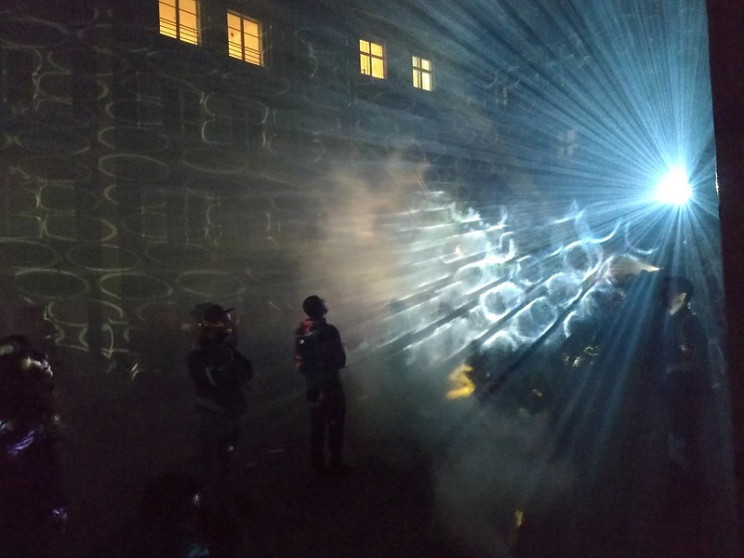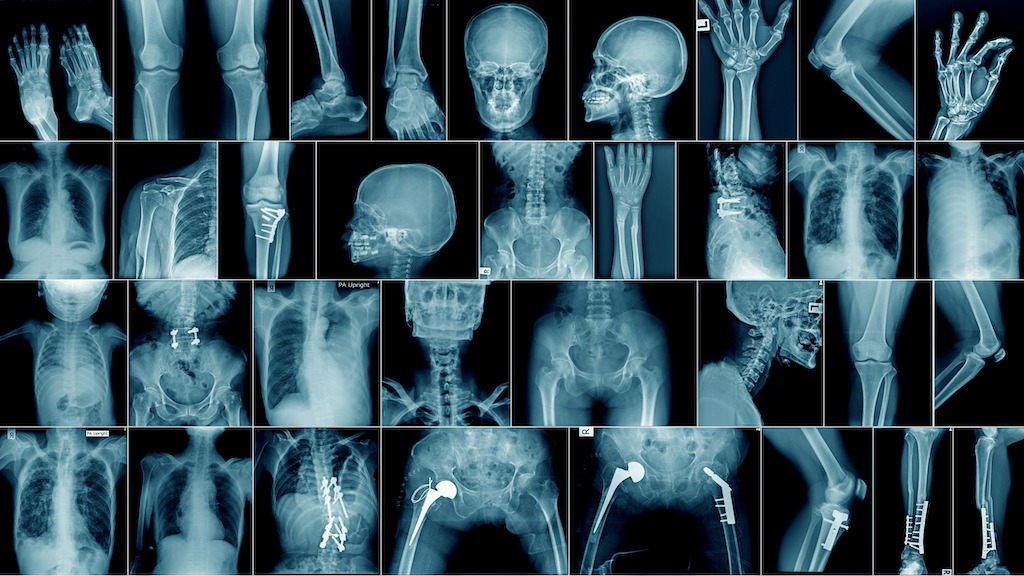The electromagnetic spectrum provides us light so we can see what is around us. The electromagnetic spectrum also provides many other important facets in today's world. The following is from interestingengineering.com and written by Rupendra Brahambhatt & Christopher McFadden that covers why the electromagnetic spectrum is important to us:
"From enabling us to walk around and not bump into things to developing highly advanced directed energy weapons, the electromagnetic spectrum is vitally important to many aspects of our modern lives. But, life as we know it would also not be possible if electromagnetic radiation, notably visible light, did not exist.
For most of human history we have only known (but not fully understood) a very small portion of the spectrum - namely visible light and "heat" in the form of infrared light. But, since the scientific enlightenment our knowledge of the spectrum, and applications using it, have literally revolutionized the way we live and perceive the world and the cosmos around us.
Let's take a look at what exactly EM radiation is, and take a whistle-stop tour through the history of its discovery.
What is the electromagnetic spectrum?
Light is the phenomenon that allows us to see. However, human eyes can not perceive the entire range of wavelengths or frequencies that make up electromagnetic radiation (EM) — collectively termed the "electromagnetic spectrum," of which visible light is but a small portion.
Electromagnetic radiation is energy that travels and spreads out as it goes. For example. visible light that comes from a lamp in your house or the radio waves that come from a radio station are two types of electromagnetic radiation. The other types of EM radiation that make up the electromagnetic spectrum include microwaves, infrared light, ultraviolet light, X-rays, and gamma-rays.
Electromagnetic waves are characterized on the basis of their respective energy (E), frequencies (f), and wavelengths (λ). Frequency describes how many wave patterns or cycles pass by a particular point in a given time. Frequency is often measured in Hertz (Hz), where a wave with a frequency of 1 Hz will pass by at 1 cycle per second.
Wavelength is defined as the total distance that exists between the peak of one wave and the peak of the next. Wavelength and frequency are inversely related, or to put it another way, the larger the frequency, the smaller the wavelength – and vice versa. Frequency, wavelength, and energy govern the position of different types of energy in the electromagnetic spectrum.
When electromagnetic energy travels through space, it spreads out to form a broad spectrum of radiation, which involves all the different frequencies that exist between the short-range gamma rays and long-range radio waves. Each wave, with a different frequency than the others, forms its own separate frequency band within the spectrum, and these different bands collectively form the electromagnetic spectrum.
Frequency bands not only reveal the differences between the properties of various electromagnetic waves but also affect the ways that these waves interact with matter. The frequency value in the electromagnetic spectrum ranges from below one Hz to above 1019hertz, and the wavelengths can vary from around the size of an atomic nucleus to thousands of kilometers.
Most of the electromagnetic waves are not visible to the human eye, as human eyes can only perceive light waves that have wavelengths of between around 700 nanometers (nm), or 2.76 × 10−5 inches and 380 nm (1.5 × 10−5 inches). This part of the electromagnetic spectrum is, for this reason, commonly referred to as the visible light spectrum.
Electromagnetic radiation can also be defined in terms of a stream of mass-less packets of energy, called photons, traveling in a wave-like pattern at the speed of light.
The different types of radiation are defined by the amount of energy found in the photons. Radio waves have photons with low energies, microwave photons have a little more energy than radio waves, infrared photons have still more, then visible, ultraviolet, X-rays, and, the most energetic of all, gamma-rays.
The energy, wavelength, and frequency of different parts of the electromagnetic (EM) spectrum are given as" (see Spectrum of Electromagnetic Radiation image attached)
"There is an inverse relationship between frequency and wavelength, but the energy of an EM wave is positively affected by its frequency and amplitude. Therefore, light rays with higher frequency and shorter wavelengths have greater amounts of energy. Longer wavelengths and lower frequency result in lower energy.
EM waves with the highest frequencies, such as gamma, X-ray, and ultraviolet (UV) have the lowest wavelengths, whereas the long-range waves that fall in the radio, microwave and, infrared regions of the spectrum have the lowest energy and frequency values.
Among all the forms of EM radiation, gamma rays have the maximum frequency and, therefore, penetrating power. For this reason, such rays are used in radiotherapy and radio-oncology.
Radio waves, on the other hand, have the highest wavelength and are best suited for long-range communication devices and equipment (such as navigation systems, broadcasting setup, radio, wireless technology, etc).
Who discovered the electromagnetic spectrum?
In a sense, so to speak, we have known about the visible light and infrared parts of the EM spectrum since the earliest days of our species. But it wasn't really until the 1800s that we finally began to systematically attempt to study it in detail.
One of the most important pioneers in the field, astronomer William Herschel, published the results from a series of experiments he conducted in 1800 that led him to identify what is now known as infrared radiation. Herschel had been using telescopes to observe the Sun, and protecting his eyesight with dark glass filters. He noticed that some colors of filter seemed to allow through more of the light, while others transmitted more radiation that warmed things up.
As a result of these observations, Herschel set up an experiment where sunlight was passed through a slit and then through a prism, forming a spectrum on his table. Using thermometers, he measured the temperature at different points in the spectrum.
He found out that the highest temperature actually occurred in the empty region of the spectrum beyond red light. Herschel came to the conclusion that 'heat' and light are part of the same spectrum.
Later, a German chemist, Johann W. Ritter, was intrigued with Herschel’s findings. In 1801, he noticed that invisible light beyond the optical region of the electromagnetic spectrum darkened silver chloride. He used a prism to split sunlight and then measured the relative darkening of the silver chloride as a function of wavelength. He found that the region just beyond violet produced the most darkening, and so this region was eventually christened "ultraviolet".
At the same time, physicist Alessandro Volta reported the invention of a battery, which allowed experimenters to begin working with continuous direct current. Around 20 years later, Hans Christian Ørsted demonstrated a link between electricity and magnetism when he showed that a compass needle would move when brought close to a current-carrying wire. In the early 1830s, Michael Faraday demonstrated that drawing a magnet through a loop of wire could generate current.
Faraday suggested there was an invisible “electrotonic state” or field surrounding the magnet. He suggested that changes in this electrotonic state are what cause electromagnetic phenomena, and hypothesized that light itself was an electromagnetic wave. There was clearly a system at work, but it was not yet clearly understood.
In the 1850s, James Clerk Maxwell, an English scientist, set out to make mathematical sense of Faraday’s observations. In a series of papers over the next decade, he developed a scientific theory to explain electromagnetic waves. Focusing on mathematics, he described how electricity and magnetism are linked and how they move in concert to make an electromagnetic wave.
Maxwell's work was revolutionary, and allowed for the unification of the following laws:
-
Gauss's Law: According to Gauss's Law, the net outward normal electric flux for any closed surface is directly proportional to the total electric field within that closed surface.
-
Gauss's Law for Magnetism: The magnetic flux for a closed surface comes out to be zero because the inward flux value at the south pole is equal to the outward flux at the north pole.
-
Faraday's Law: States that an electromotive force (EMF) induced by a change in magnetic flux depends on the change in flux at the time (t), and by the number of turns of coils.
-
Ampere's Law: This relates the net magnetic field along a closed loop to the electric current passing through the loop. It states that the closed line integral of the magnetic field around a current-carrying conductor is equal to absolute permeability times the total current through the conductor.
Maxwell's equations described the behavior of electric and magnetic fields and their influence on other objects. In his analysis, Maxwell also concluded that EM waves must travel at what later turned out to be the speed of light, and finally, that light was an electromagnetic wave. Through his equations, Maxwell also described the possibility of numerous EM waves with different frequencies, and therefore, he mathematically predicted the presence of the electromagnetic spectrum.
However, there was no experimental evidence for Maxwell's theories. After Maxwell's death, physicists George Francis FitzGerald and Oliver Lodge worked to strengthen the link to light, but it was German researcher, Heinrich Hertz who, in 1888, published work that demonstrated the first detection of radio-frequency waves.
He also went on to verify that electromagnetic waves exhibit light-like behaviors of reflection, refraction, diffraction, and polarization. Hertz was also able to calculate the speed of these invisible waves, which was quite close to that now known for visible light. His work would eventually lead to the innovation of the radio, cellular networks, air traffic control systems, and many other important inventions.
In the years that followed, Wilhelm Roentgen discovered X-rays (also called the Roentgen rays) and Paul Villard discovered what would later be named gamma rays. Physicists Ernest Rutherford and Edward Andrade also studied gamma rays and revealed significant details about their wavelength and other properties. While studying radioactive decay, Rutherford distinguished gamma rays from alpha and beta rays due to their higher degree of penetration through matter."
Now you know why the Electromagnetic Spectrum is important to us.
Reference: https://interestingengineering.com/electromagnetic-spectrum-is-more-important-than-you-think
I have lost a lot of faith with the Medical Community and the Governments over the last several years, but there are a few good things that can raise above the corruption and the pushing of drugs a new approach to heal people. The following is from www.gaia.com and written by Hunter Parsons that does not involve any drug or pushing an ineffective so called vaccine that the drug company is not held accountable in any way but they use sound! The use of sound can regrow bone tissue! Here is the story:
"The future of regenerative medicine could be found within sound healing by regrowing bone cells with sound waves.
The use of sound as a healing modality has an ancient tradition all over the world. The ancient Greeks used sound to cure mental disorders; Australian Aborigines reportedly use the didgeridoo to heal; and Tibetan or Himalayan singing bowls were, and still are, used for spiritual healing ceremonies.
Recently, a study showed an hour-long sound bowl meditation reduced anger, fatigue, anxiety, and ...
Not a fan of a Defense Agency studying Anti-Gravity and other Exotic Tech, but if the commercial world and make this technology cheap that will change our world yet again. The following is about three minute read and from www.gaia.com. The below was written by Hunter Parsons:
"Wormholes, invisibility cloaks, and anti-gravity — it’s not science fiction, it’s just some of the exotic things the U.S. government has been researching.
A massive document dump by the Defense Intelligence Agency shows some of the wild research projects the United States government was, at least, funding through the Advanced Aerospace Threat Identification Program known as AATIP.
And another lesser-known entity called the Advanced Aerospace Weapons System Application Program or AAWSAP
The Defense Intelligence Agency has recently released a large number of documents to different news outlets and individuals who have filed Freedom of Information Act requests.
Of particular interest are some 1,600 pages released to Vice News, which ...
As our technology gets better we are discovering more about the history of mankind and pushing the timeline back further and further. The following article is from www.gaia.com and written by Michael Chary that discusses this new find that changes the historical timeline:
"Over the past decade, there have been a number of archeological revelations pushing back the timeline of human evolution and our ancient ancestors’ various diasporas. Initially, these discoveries elicit some resistance as archeologists bemoan the daunting prospect of rewriting the history books, though once enough evidence is presented to established institutions, a new chronology becomes accepted.
But this really only pertains to the era of human development that predates civilization — the epochs of our past in which we were merely hunter-gatherers and nomads roaming the savannahs. Try challenging the consensus timeline of human civilization and it’s likely you’ll be met with derision and rigidity.
Conversely, someone of an alternative...
Not sure if you have heard of a show on YouTube called "The Why Files". If not you should check it out it is interesting and has some humor with it on different subjects. Last weeks was on a different theory how the Universe works and how main stream Science is attempting to shut it down like is always seems to do if it goes aguest some special interest. Today it is akin to what happened to those who questioned the Earth was the Center of the Universe that main stream so called Science all believed during the Renaissance period, They called any theory that the Earth was not the Center of the Universe misinformation. Does this sound familiar today? People laughed and mocked people like Leonardo da Vinci, Nicolaus Copernicus, Georg Purbach as crack-pots, conspiracy theorists, nut-jobs and they were suppressed and even imprisoned for their radical thoughts and observations. Again it sounds like today in so many ways. In any event this is a good one to ponder and see even if a bad idea ...
Seemingly chaotic systems like the weather and the financial markets are governed by the laws of chaos theory.
We all have heard about chaos theory, but if you have not or have forgotten what chaos theory is well here you go from interestingengineering.com:
"Chaos theory deals with dynamic systems, which are highly sensitive to initial conditions, making it almost impossible to track the resulting unpredictable behavior. Chaos theory seeks to find patterns in systems that appear random, such as weather, fluid turbulence, and the stock market.
Since the smallest of changes can lead to vastly different outcomes, the long-term behavior of chaotic systems is difficult to predict despite their inherently deterministic nature.
As Edward Lorenz, who first proposed what became commonly known as the Butterfly Effect, eloquently said, "Chaos: When the present determines the future, but the approximate present does not approximately determine the future.""
You may have heard the term about chaos theory as a butterfly flaps its wings in Brazil,...
I for one have lost trust in Medical Doctors due to COVID and reflection that they seem to push pills for everything and untested so called vaccines that is using a unproven technology because the Government and the Medical Boards of the State told them to. There are a very few exceptions. Thus they do not address the key problem just prescribe more and more pills to keep you alive an sick longer for them and Big Phama to profit from you. Will AI do any better? Well that depends on what was used for the training of AI. If it also pushes pills and vaccines without question then you have the same problems noted above. However, if the AI Training includes all possible forms of treatment and they zero in on the right issues for the true problem then there is possibilities they would be way better than most of the current Medical Doctors today.
The following is from an article from interestingengineering.com and written by Paul Ratner:
"A new study looks at how accurately AI can diagnose patients. We interview the researcher, who weighs in on AI's role ...






























